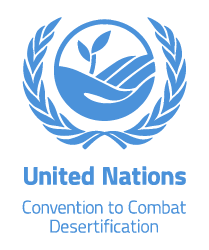Location
The United Nations Convention to Combat Desertification in Those Countries Experiencing Serious Drought and/or Desertification, Particularly in Africa (UNCCD) is a Convention to combat desertification and mitigate the effects of drought through national action programs that incorporate long-term strategies supported by international cooperation and partnership arrangements.
Members:
Resources
Displaying 86 - 90 of 585Evicted by Climate Change: Confronting the Gendered Impacts of Climate-induced Displacement
In a world in which poverty is increasingly concentrated in vulnerable or fragile states, and fragility is increasingly driven by climate change, climate-induced displacement has become one of the most visible manifestations of the relationship between ecological and societal breakdown. Newest figures from the Internal Displacement Monitoring Centre reveal that over 70% of the 33 million newly displaced people (2019) had climate-related triggers.
IPBES Workshop on Biodiversity and Pandemics
Land use change is a major global driver of pandemic risk. Land usechange is a significant driver of the transmission and emergence of infectious diseases 40,177-179. Land use changeis cited as the cause of over 30% of emerging infectious diseases, and correlates significantly withthe emergence of novel zoonoses globally 13,180. However, the mechanisms by which diseases emergeare context-specific and scale-dependent.
Reversing Land Degradation in Drylands: The Case for Farmer Managed Natural Regeneration (FMNR) in the Upper West Region of Ghana.
The Lawra district of the Upper West region was selected as the case study. This study compared crop yields for FMNR and non-FMNR farmers. FMNR farmers are classified as having at least 8 trees per acre, with an average of 13 trees per acre (33 per ha) and a maximum of 40. Non-FMNR farmers are classified as having between 1 and 7 trees per acre, with an average of 5.Qualitative (focus group discussion) and quantitative (household survey) data were collected in April to May 2019. Over 500 households were interviewed in both CIKOD intervention communities and control sites.
Regreening Africa: A bottom-up transformation of degraded lands
It is estimated that 20% of global land is either degraded or undergoing degradation, leading to an annual loss of 12 million hectares of productive land (UNCCD 2017). In Africa, some 715 million ha are degraded, including 65% of all arable land, 30% of all grazing land and 20% of all forests. This is due to increasing populations, poor land management, institutional challenges and climate change (Gnacadja and Wiese 2016).
Caring for soil is caring for life. Ensure 75% of soils are healthy by 2030 for healthy food, people, nature and climate : interim report of the mission board for soil health and food
Life on Earth depends on healthy soils. The soil under our feet is a living system – home to many fascinating plants and animals, whose invisible interactions ensure our well-being and that of the planet. Soils provide us with nutritious food and other products as well as with clean water and flourishing habitats for biodiversity. At the same time, soils can help slow the onset of climate change and make us more resilient to extreme climate events such as droughts and floods. Soils preserve our cultural heritage and are a key part of the landscapes that we all cherish.


